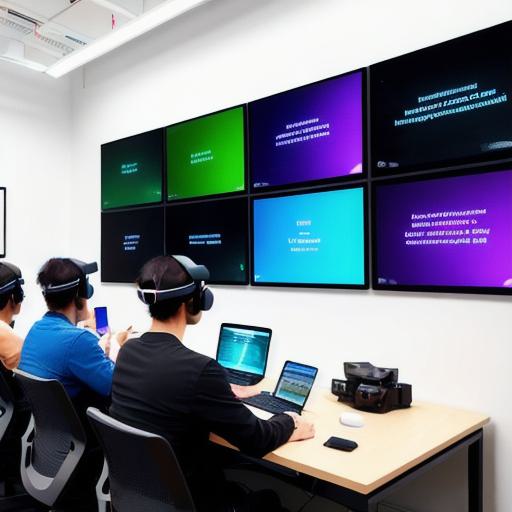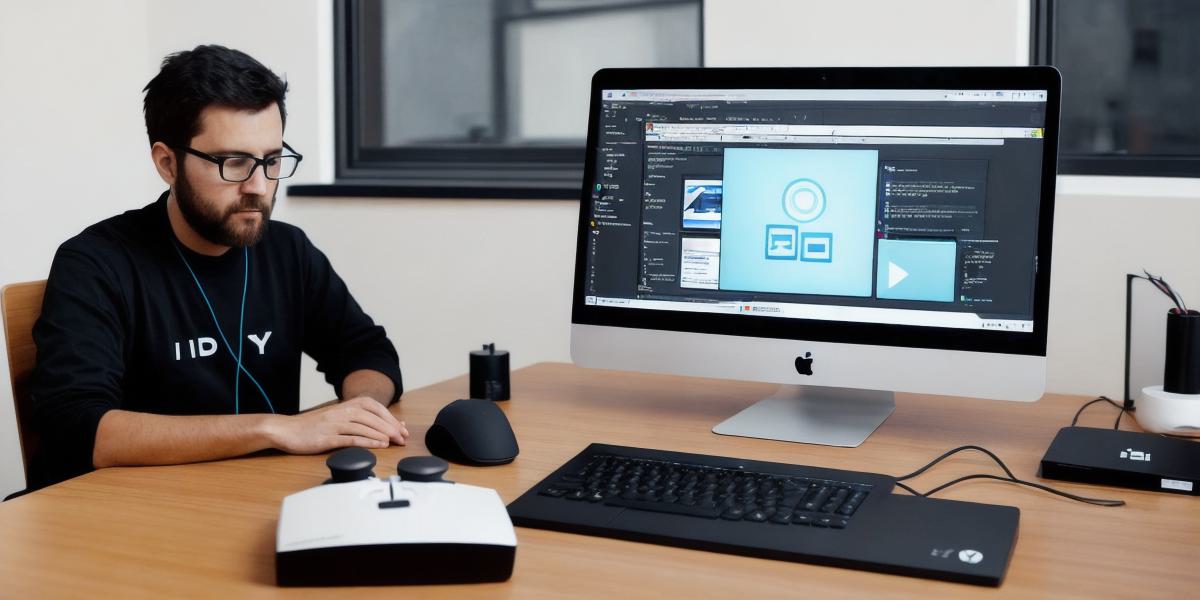**Starting Your VR Journey with Unity: Prerequisites and Setup**
Welcome web developers! Today, we’ll embark on an exciting journey into the world of Virtual Reality (VR) development using Unity. Let’s clarify a common misconception upfront – you don’t need to be a seasoned 3D artist or game developer to create VR experiences in Unity.
To begin, ensure that your system meets the minimum requirements for Unity’s VR development: A VR headset, a decent graphics card, and a PC powerful enough to run Unity with VR plugins.
Installation and Configuration
Download Unity Hub from unity3d.com/get-unity/download to manage multiple installations of different versions. After installation, launch the hub and create a new project, selecting the "VR Template" under the "3D" category. Install any necessary VR plugins, such as the Oculus Integration for Oculus headsets or the SteamVR plugin for HTC Vive.

Mastering Unity’s Interface: Scene and Game Views, Hierarchy, and Inspector
Familiarize yourself with Unity’s interface. The Scene view is your 3D workspace to design levels and place objects, while the Game view lets you test your project in real-time. The Hierarchy window organizes all the objects in your scene, and the Inspector provides detailed information about selected objects.
**Scripting Your VR Experiences: C Basics and Unity Events**
C is Unity’s native scripting language. Start by learning its basics, such as variables, functions, conditional statements, loops, and classes. You’ll utilize these constructs to create interactivity within your VR environments.
Unity Events are a powerful way to respond to user actions or system events. For example, an event can be used to trigger a function whenever a button is pressed in VR.
Creating Interactive VR Experiences: Input and User Interaction**
Use Unity’s Input Manager to capture user input from controllers. Map controller buttons and axes to variables for easy interaction. Implement physics interactions, such as grabbing objects or pushing them away, using Rigidbody components and collision detection.
Optimizing Your VR Project: Performance and Best Practices**

Optimize your project to ensure a smooth VR experience. Minimize draw calls by combining objects with the same materials into prefabs, use LODs for distant objects, and leverage occlusion culling.
Follow best practices like maintaining proper asset scaling, organizing your scene hierarchy, and using Unity’s built-in tools for analysis and optimization.
**Publishing Your VR Masterpiece: WebGL and Sharing Your Creation**
Once you’ve created an engaging VR experience, it’s time to share it with the world. Unity supports publishing projects for the web using WebGL technology. Configure your build settings, ensuring that your project includes only essential components and optimized assets. Publish your creation on platforms like GitHub Pages or a dedicated hosting service.
**Summary: Creating Immersive Web Experiences with Unity**
With this comprehensive guide, you’re now prepared to start creating immersive VR experiences using Unity as a web developer. Remember that learning new tools takes time and patience, but the reward is a unique skillset and captivating web projects that engage your users in ways never before imagined.
